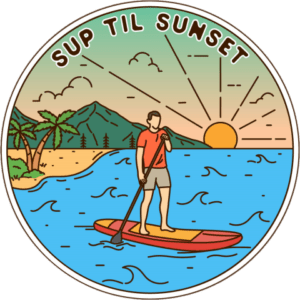There are lots of watersports out there but very few grew as rapidly and appealed to such a wide range of people as Paddleboarding, specifically Stand Up Paddle boarding.
Paddle boarding is believed to have been around in some shape or form for over 3000 years however modern day paddleboarding has been around for approximately 100 years and has grown rapidly over the last decade.
Paddle boarding is a water sport in which you stand on top of a large board and propel yourself along using a paddle.
Paddleboarding can be done in any body of water including: oceans, rivers, lakes, canals and docks.

When you think of paddleboarding you tend to picture someone standing on a large board casualling drifting along the water without a care in the world.
However, since paddle boarding started to gain traction it has progressed massively with the inception of different variations of the sport.
Different Types of Paddle Boarding
Recreational
The first type of paddleboarding is the example I used above, recreational paddle boarding.
Recreational paddleboarding is any form of paddleboarding where you are just casually paddling and having a nice time, be that on your own, with friends or even with your pets.
This is the most common form of paddleboarding as I would include any beginners who are trying the sport for the first time as recreational paddlers.
Touring
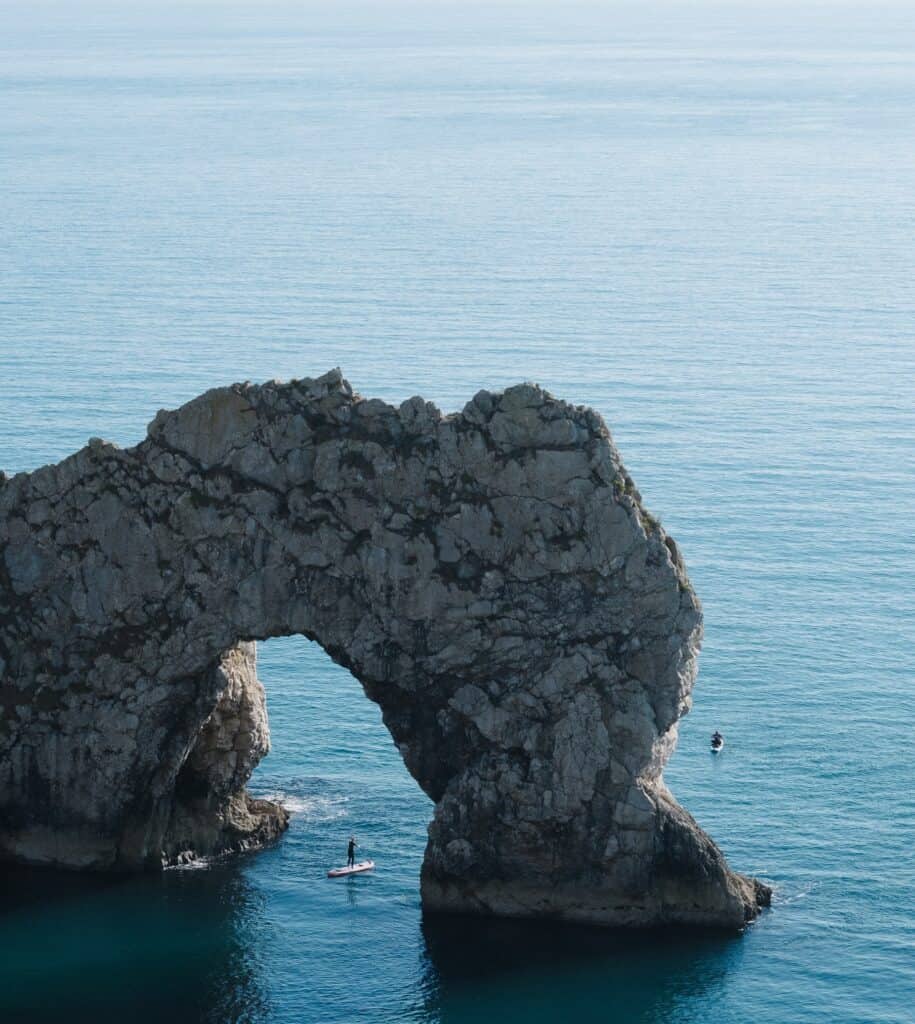
Touring is where you paddleboard for a considerable distance at a steady consistent pace.
When you are Touring you don’t normally stop for breaks so it can be quite exhausting.
Touring is a fantastic way to explore the local waterways in your area and see the world for a different perspective.
Racing
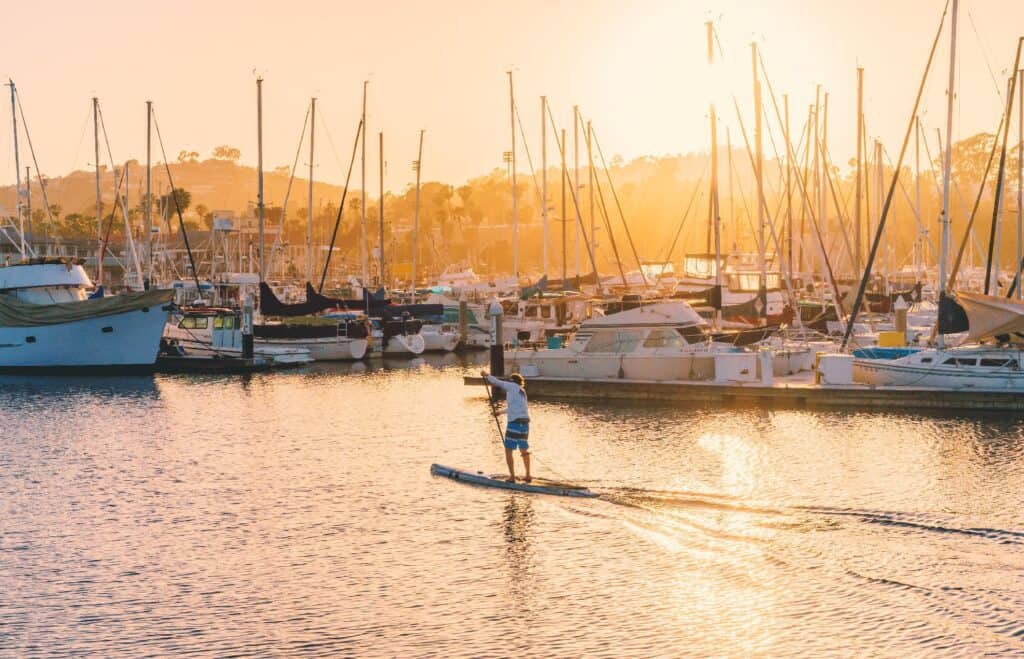
I’m sure this subheading requires no description but on the off chance you are not sure what this is let me explain.
Racing on your paddleboard is normally an organised event in which you go from a start point to an end point whilst competing against other paddlers.
There are many major races across the globe including locations such as Germany, Japan & USA.
Surfing
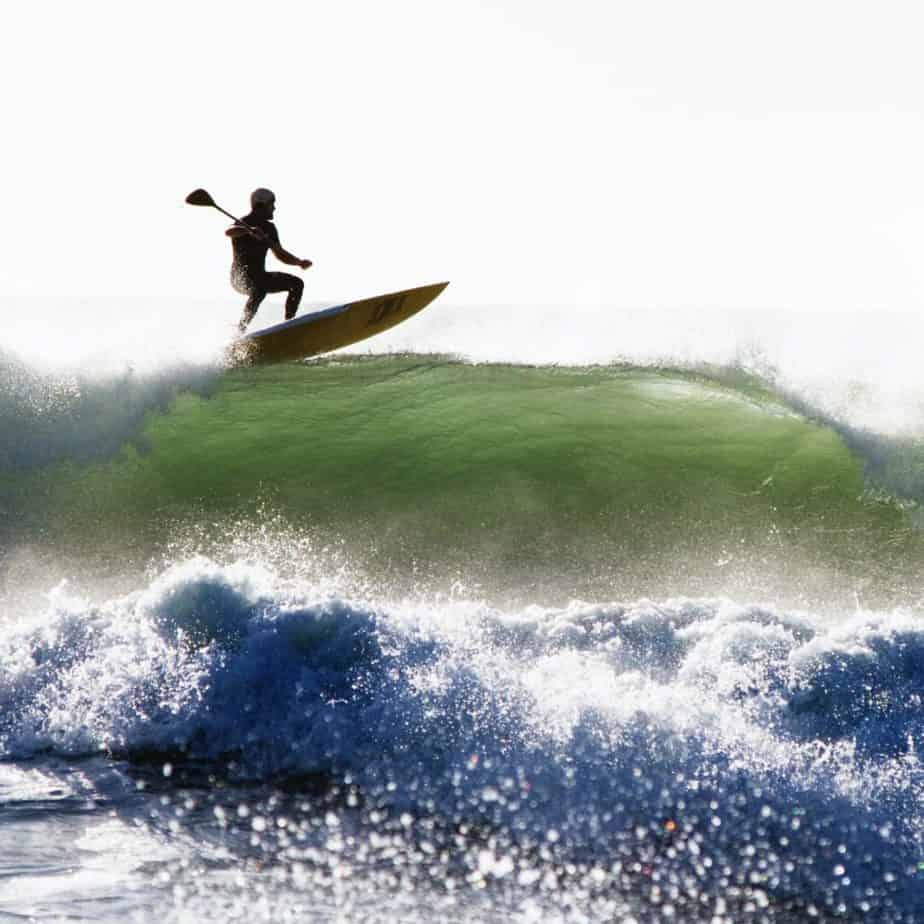
Surfing on your paddleboard is similar to traditional surfing.
The main difference is you don’t lay down and paddle into the wave using your arms and shoulders, you stand up on your board and propel yourself into the wave using your trusted paddle.
The benefits of Paddleboard surfing over traditional surfing is you are able to get on the wave much earlier than you would if you were surfing.
This allows paddleboard surfers to ride much smaller waves than surfers would want to.
It also gives the paddler something to do in between waves.
Yoga
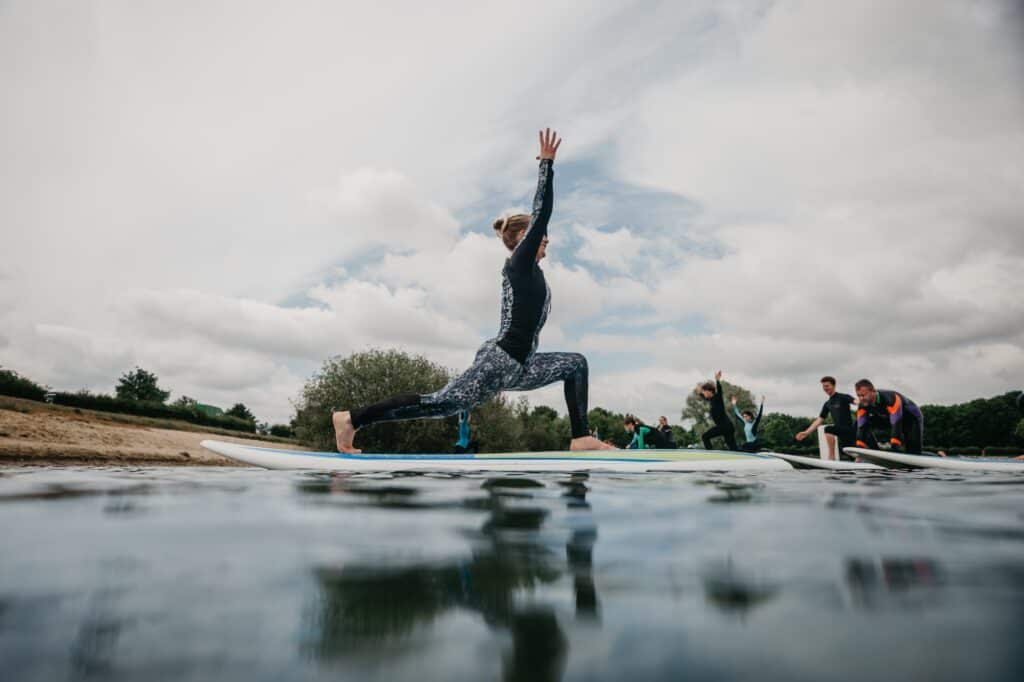
Yoga as I’m sure you are aware has been around for thousands of years and it will be around for thousands more.
Yoga is an extremely popular form of exercise as it offers many benefits such as improved body and mind control, release anxiety etc.. etc.. The list goes on and on.
When paddleboarding started becoming popular, many Yoga teachers who enjoyed being on the water saw the opportunity to combine the two.
Performing Yoga on a paddleboard not only allows you to feel closer to Mother Nature but also adds additional challenges to the exercises and poses themselves.
If you are someone who enjoys Yoga, grab a paddleboard and give it a try on the water for an additional challenge.
What Other Names is Paddle Boarding Known By?
There is really only one name for the activity of Stand Up Paddle boarding however there are several abbreviations and connotations.
So what are these abbreviations and what do they stand for?
SUP
SUP is an abbreviation of Stand Up Paddle Board. This abbreviation covers all forms and types of Stand Up Paddle Board.
SUPing
SUPing is an abbreviation of Stand Up Paddle Boarding
ISUP
ISUP is an abbreviation of Inflatable Stand Up Paddle Board. There are a few different available options when it comes to board constructions, there are Epoxy, Soft top foam & Inflatable.
ISUP refers to the Inflatable boards.
ISUPing
ISUPing is the abbreviation for Inflatable Stand Up Paddle Boarding.
How To Get Into Paddle Boarding
If you are interested in getting into paddleboarding you may start searching for boards to purchase.
When you do, you may be put off by just how expensive boards are.
Especially if you don’t know if you are even going to enjoy the sport.
Fortunately we have a way of trying the activity without going broke buying boards.
There are many hire companies out there that allow you to hire boards for a day, a few days or even a couple of weeks.
My suggestion would be to hire a board, put it through its paces and see if paddleboarding is the hobby for you.
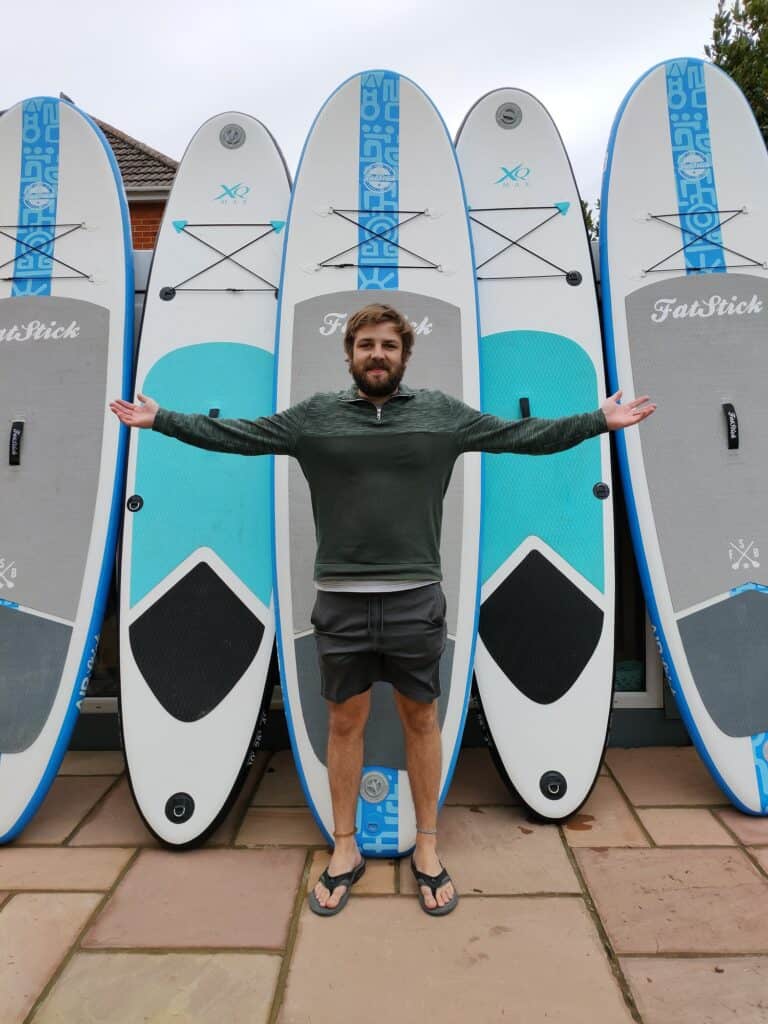
If you are UK based and want to hire a paddleboard check out my hire business Sup2you.co.uk to get your board delivered direct to your door next day.
With that being said and done.
See you on the water.
